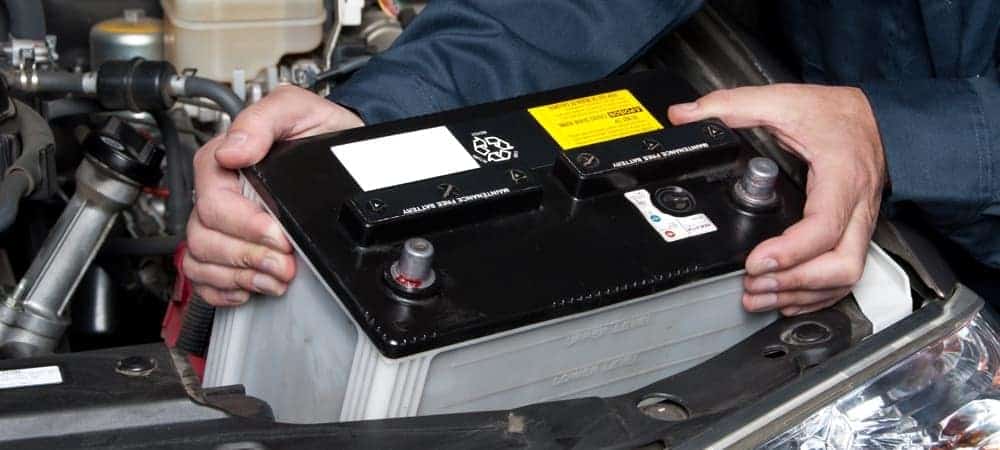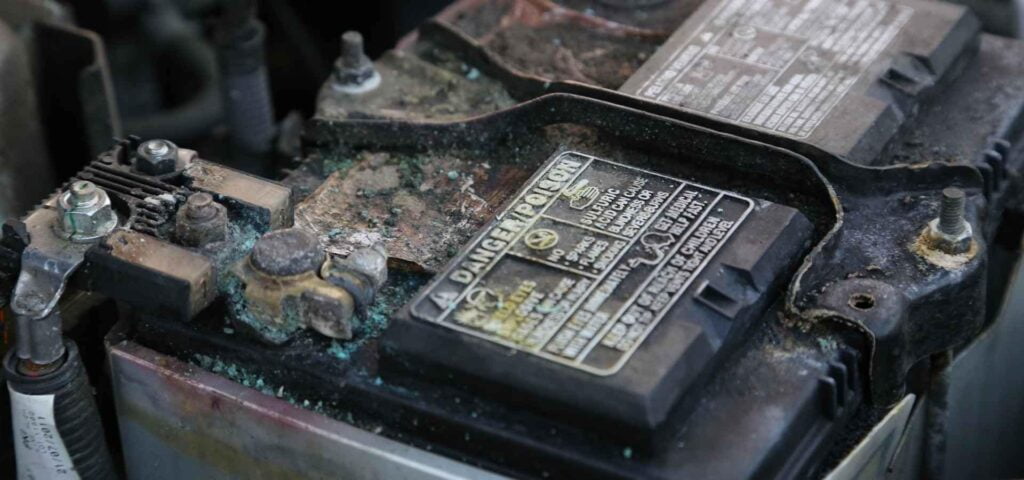- Jeep Cherokee Push Button Start Not Working: Troubleshooting Tips To Get You Back on the Road Fast! - 11 November 2023
- Haval H2 Problems: The Complete Troubleshooting Guide - 11 November 2023
- Gwm P Series Problems: Troubleshooting Guide for Common Issues - 11 November 2023
The acid in a car battery is sulfuric acid. It is highly corrosive and can cause permanent damage if it comes into contact with the eyes or is swallowed.
It is important to handle car battery acid with caution to avoid any harm or accidents.
Heading: Understanding Battery Acid In Car Batteries
Car batteries contain sulfuric acid, which is highly corrosive and more harmful than other battery acids. Contact with the eyes can cause permanent blindness, and swallowing it can lead to internal organ damage or death. It is important to handle car battery acid with caution.
Explanation Of The Composition And Importance Of Battery Acid
Battery acid is a crucial component in car batteries as it serves as the electrolyte that facilitates the chemical reactions necessary for power generation. In particular, car batteries use sulfuric acid as their preferred acid due to its ability to conduct electricity efficiently. The sulfuric acid is typically diluted with water to form a solution, creating the electrolyte that allows the exchange of ions between the battery’s positive and negative terminals.
The composition of battery acid in car batteries primarily consists of water and sulfuric acid, which is mixed in specific proportions to create the required concentration. This mixture is designed to provide optimal performance and longevity to the battery, allowing it to deliver a consistent and reliable source of electrical power to start the car’s engine and power its electrical systems.
Introduction To The Dangers And Risks Associated With Battery Acid
It’s essential to be aware of the dangers and risks associated with battery acid in car batteries. The sulfuric acid used in car batteries is highly corrosive, capable of causing severe burns to the skin and eyes upon contact. Additionally, inhaling the fumes released by battery acid can be harmful to your respiratory system.
Direct contact with battery acid should be avoided at all costs, as it can lead to irreversible damage to the skin and eyes. If you accidentally come into contact with battery acid, it’s crucial to wash the affected area thoroughly with copious amounts of water and seek immediate medical attention.
Furthermore, mishandling or improper disposal of car batteries can have detrimental effects on the environment. Battery acid cannot be disposed of in regular household waste as it poses a significant risk of contamination to soil and water sources, leading to pollution. Therefore, it is important to follow proper procedures for battery disposal or recycling to minimize environmental impact.
Subheading: What Is Battery Acid And Its Components?
In a car battery, the acid used is sulfuric acid, which is highly corrosive and can cause serious harm if it comes into contact with the skin or eyes. It’s important to handle it with caution and avoid any direct contact.
Definition And Explanation Of Battery Acid
Battery acid, also known as electrolyte, is a vital component of a car battery that plays a crucial role in its functionality. It is a mixture of sulfuric acid and water, creating a highly corrosive solution. The primary function of battery acid is to provide the necessary chemical reactions within the battery to generate and store electrical energy.
Mentioning The Components Of Battery Acid
The components of battery acid include sulfuric acid and water. Let’s take a closer look at each of these components and their importance:
Sulfuric Acid:
Sulfuric acid is the main ingredient in battery acid, constituting about 35% of the solution. It is a strong acid known for its powerful corrosive properties. Sulfuric acid helps to facilitate the electrochemical reactions inside the battery, allowing for the conversion of chemical energy into electrical energy. This reaction is what enables the battery to start the car’s engine and power its electrical systems.
Water:
Water makes up the remaining percentage of battery acid, typically around 65%. It mainly acts as a diluting agent for sulfuric acid, minimizing its intensity and making it safer to handle. Water also aids in creating a conductive medium for the movement of ions within the battery, enhancing the overall electrolytic process.
It is important to handle battery acid with extreme caution, as it is highly corrosive and can cause severe damage to skin, eyes, and other surfaces. Always follow proper safety procedures and wear appropriate protective gear when dealing with battery acid.
Table: Ph Values Of Some Chemicals
| Chemical | pH Value |
|---|---|
| Battery Acid (Sulfuric Acid) | 1.0 |
| Hydrochloric Acid | 0.1 |
| Vinegar (Acetic Acid) | 2.4 |
| Ammonia | 11.0 |
As shown in the table above, battery acid (sulfuric acid) has a pH value of 1.0, indicating its highly acidic nature.
Subheading: The Role Of Sulfuric Acid In Car Batteries
Sulfuric acid is the type of acid found in a car battery. It is highly corrosive and can cause permanent damage if it comes into contact with the eyes or is swallowed. It is important to handle car battery acid with caution and avoid direct contact.
Discussing The Specific Acid Used In Car Batteries, Which Is Sulfuric Acid
When it comes to car batteries, one of the key components that plays a critical role in their functionality is sulfuric acid. Sulfuric acid is the specific type of acid used in car batteries, and it is responsible for several important functions within the battery.
Highlighting The Reasons Why Sulfuric Acid Is Chosen For Car Batteries
Sulfuric acid is chosen as the acid for car batteries due to a number of reasons. Let’s explore some of these reasons below:
- High electrical conductivity: Sulfuric acid is highly conductive, making it an ideal choice for facilitating the flow of electrons in a car battery. This property allows for efficient energy storage and discharge, enabling the battery to power various electrical components of the vehicle.
- Chemical stability: Sulfuric acid is a highly stable compound, which means it can withstand the demanding conditions that occur within a car battery. This stability ensures that the acid remains effective over a longer period of time, contributing to the longevity and reliability of the battery.
- Strong acid properties: Sulfuric acid is a strong acid, meaning it has a high concentration of hydrogen ions (H+) available for chemical reactions. This property is crucial for the battery’s ability to generate and sustain a strong electrical current, providing the power necessary for the vehicle’s operations.
- Cost-effectiveness: Sulfuric acid is relatively inexpensive compared to other types of acids, making it a cost-effective choice for car batteries. This affordability contributes to the accessibility and widespread use of car batteries in various vehicles.
Overall, sulfuric acid is the acid of choice for car batteries due to its high electrical conductivity, chemical stability, strong acid properties, and cost-effectiveness. These qualities work together to ensure reliable and efficient energy storage in the battery, ultimately powering the vehicle and its electrical systems.

Credit: www.spaceflightpower.com
Subheading: Dangers And Risks Of Battery Acid
The acid commonly found in car batteries is sulfuric acid. It is highly corrosive and can cause severe harm if it comes into contact with the skin or eyes. It is important to handle car batteries with caution and to always protect yourself from the dangers and risks of battery acid.
Exploring The Potential Dangers And Risks Of Battery Acid
Battery acid is a crucial component of car batteries, providing the power necessary to start the engine and keep the electrical systems running smoothly. However, it’s important to understand the potential dangers and risks associated with battery acid to ensure your safety and well-being.
Discussing The Corrosive Nature And Harmful Effects On Human Health
Battery acid, also known as sulfuric acid, is highly corrosive and can cause severe damage if not handled with care. Its corrosive nature means that it has the ability to eat away at various materials, including metal, skin, and even clothing. When it comes into contact with human skin, it can cause painful burns, irritation, and blistering.
Moreover, if battery acid comes into contact with the eyes, it can lead to permanent blindness. Ingesting battery acid is extremely dangerous, as it can cause severe internal organ damage that can even result in death. Therefore, it is crucial to always exercise caution and take proper precautions when dealing with battery acid.
Ensuring Safety Measures When Handling Battery Acid
When dealing with battery acid, it is important to keep the following safety measures in mind:
- Always wear protective clothing, such as gloves, goggles, and a lab coat, to minimize the risk of contact with the acid.
- Work in a well-ventilated area to avoid inhaling any harmful fumes that may be released during the handling of battery acid.
- If battery acid spills, be sure to clean it up immediately using a neutralizing agent, such as baking soda, and then dispose of it properly.
- Never attempt to mix battery acid with other chemicals, as this can result in potentially hazardous reactions.
- Store battery acid in a cool and dry place, away from children and pets, and always keep it in a tightly sealed container.
By following these safety measures, you can minimize the risks associated with battery acid and ensure your own well-being.
Subheading: Safety Measures When Handling Battery Acid
When handling battery acid, it is important to prioritize safety measures due to its highly corrosive nature. Car batteries typically contain sulfuric acid, which can cause permanent blindness if it comes into contact with the eyes, and internal organ damage if swallowed.
Be cautious and avoid direct skin contact with battery acid.
Providing Safety Guidelines And Precautions When Handling Battery Acid
When it comes to working with battery acid, it is crucial to prioritize safety measures. Battery acid, which is predominantly sulfuric acid, is highly corrosive and can cause serious harm if not handled properly. To ensure your well-being and protect yourself from the dangers of battery acid, here are some essential safety guidelines and precautions to follow:
Highlighting Steps To Protect Oneself From The Dangers Of Battery Acid
To protect yourself from the dangers of battery acid, it is essential to take the following steps:
- Proper Protective Clothing and Equipment Required: Wear appropriate protective clothing, including safety goggles, gloves, and a lab coat or apron. These items create a barrier between your skin and the acid, reducing the risk of contact and potential burns.
- Proper Handling and Storage Procedures: Handle battery acid cautiously and avoid any unnecessary contact. When not in use, store the battery acid in a well-ventilated area away from ignition sources and out of the reach of children and pets.
- Spill Containment and Cleanup Procedures: In the event of a spill, it is crucial to contain the acid and clean it up properly. Use absorbent materials, such as sand or baking soda, to neutralize the acid and prevent further damage. Dispose of the contaminated materials according to local regulations.
By following these safety measures and taking proper precautions, you can significantly reduce the risks associated with handling battery acid. Remember, safety should always be a priority when working with hazardous substances.
Frequently Asked Questions Of What Type Of Acid Is In A Car Battery
What Kind Of Acid Do You Put In A Car Battery?
The acid used in a car battery is sulfuric acid, which is highly corrosive and can cause serious harm if in contact with the skin or eyes. Do not add sulfuric acid to your battery; only fill it with water when needed to maintain its health and safety.
How Toxic Is Car Battery Acid?
Car battery acid, also known as sulfuric acid, is highly toxic. It can cause permanent blindness if it comes into contact with the eyes, and swallowing it can damage internal organs and even lead to death. It is important to handle car battery acid with extreme caution and avoid any direct contact with it.
Is Battery Acid Safe To Touch?
Battery acid, which is sulfuric acid, is not safe to touch. It is highly corrosive and can cause severe burns and injuries. It can also cause blindness if it comes in contact with the eyes and can be fatal if ingested.
It is important to handle battery acid with extreme caution and use proper protective equipment when working with it.
Can You Refill Car Battery Acid?
No, you should never refill a car battery with sulfuric acid. During normal operation, batteries only consume water. If the electrolyte level is low, adding water will keep the battery safe and healthy. Avoid contact with battery acid as it is highly corrosive and can cause harm to your skin and internal organs.
What Type Of Acid Is Used In Car Batteries?
Car batteries use sulfuric acid as their electrolyte, which is a highly corrosive acidic solution.
Conclusion
To ensure the proper functioning of a car battery, sulfuric acid is used as an electrolyte. However, it is important to handle battery acid with caution as it can be highly corrosive and pose serious health risks. Contact with eyes can lead to permanent blindness, and ingestion can cause severe internal organ damage.
Therefore, it is crucial to always prioritize safety and avoid direct contact with battery acid. If you notice that the electrolyte level is low, it is recommended to refill the battery with water instead of sulfuric acid to maintain its health and performance.


